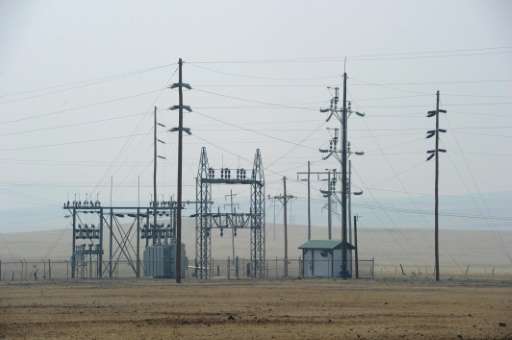The cost to upgrade the US electrical grid so it could cope with peak demands may be on the order of $180 billion, said the report in the Proceedings of the National Academy of Sciences
As the planet warms due to climate change and hot days become more common, the US electrical grid could be unable to meet peak energy needs by century's end, researchers warned Monday.
The cost to upgrade the US electrical grid so it could cope with peak demands may be on the order of $180 billion, said the report in the Proceedings of the National Academy of Sciences.
"As the electricity grid is built to endure maximum load, our findings have significant implications for the construction of costly peak generating capacity," said the study.
Previous research has focused on how needs for electricity would grow due to climate change, mainly because people would use more electricity to keep themselves cool.
The current study also factors in the effect of ever-more frequent and intense heat when it comes to peak electricity demand, or the maximum amount of electricity a given area would need at one time.
Some areas will likely use less electricity, for instance in the northwestern United States, where cold days will become less intense.
But other areas, like the southern United States, "could experience an increased number of spikes in electricity use as hot days become more prevalent," said the study.
These jumps in peak electricity demands "may require substantial investments by US electricity grids into peak electricity generating capacity."
Much of the costs to upgrade the grid would involve capacity, storage and transmission investments—not simply the cost of generating electricity.
If the world continues to burn fossil fuels at the current rate, without any major effort to mitigate the damage caused by greenhouse gases, the United States' peak electrical needs could rise by as much as 18 percent and cost around $180 billion, said the report.
Looking solely at average daily electricity use, researchers said that would rise by about 2.8 percent by century's end.
"These estimates show that the existing papers focusing solely on consumption ... ignore(s) a large portion of the likely costs of climate change," said the report, led by scientists at the University of California, Berkeley; Stanford University, the University of Michigan and the University of British Columbia.
Increasing the use of solar energy to meet demand "could smooth some of peak demand," added the study, cautioning however that sunny days don't always coincide with hot days.
The United States is the second largest producer and consumer of electricity in the world after China.
More information: "Climate change is projected to have severe impacts on the frequency and intensity of peak electricity demand across the United States," PNAS, www.pnas.org/cgi/doi/10.1073/pnas.1613193114
Journal information: Proceedings of the National Academy of Sciences
© 2017 AFP






















